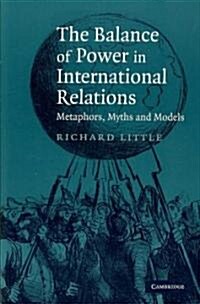
단행본
(The) balance of power in international relations: metaphors, myths, and models
- 개인저자
- Richard Little
- 발행사항
- New York : Cambridge University Press, 2007
- 형태사항
- x, 317 p. : ill. ; 24 cm
- ISBN
- 9780521697606
- 청구기호
- 349.01 L777b
- 서지주기
- Includes bibliographical references (p. 288-311) and index
소장정보
| 위치 | 등록번호 | 청구기호 / 출력 | 상태 | 반납예정일 |
|---|---|---|---|---|
이용 가능 (1) | ||||
| 1자료실 | 00011107 | 대출가능 | - | |
이용 가능 (1)
- 등록번호
- 00011107
- 상태/반납예정일
- 대출가능
- -
- 위치/청구기호(출력)
- 1자료실
책 소개
The balance of power has been a central concept in the theory and practice of international relations for the past five hundred years. It has also played a key role in some of the most important attempts to develop a theory of international politics in the contemporary study of international relations. In this 2007 book, Richard Little establishes a framework that treats the balance of power as a metaphor, a myth and a model. He then uses this framework to reassess four major texts that use the balance of power to promote a theoretical understanding of international relations: Hans J. Morgenthau's Politics Among Nations (1948), Hedley Bull's The Anarchical Society (1977), Kenneth N. Waltz's Theory of International Politics (1979) and John J. Mearsheimer's The Tragedy of Great Power Politics (2001). These reassessments allow the author to develop a more comprehensive model of the balance of power.
An authoritative 2007 analysis of the concept of the balance of power in international relations.
An authoritative 2007 analysis of the concept of the balance of power in international relations.
목차
Part I. Introduction: 1. Reassessing the balance of power; Part II. Metaphors, Myths and Models: 2. Metaphors and the balance of power; 3. The balance of power: from metaphors to myths and models; Part III. Balance of Power Models: 4. Hans J. Morgenthau's Politics among Nations; 5. Hedley Bull's The Anarchical Society; 6. Kenneth N. Waltz's Theory of International Politics; 7. John J. Mearsheimer's The Tragedy of Great Power Politics; Part IV. Conclusion: 8. A composite view of the balance of power for the twenty first century.
